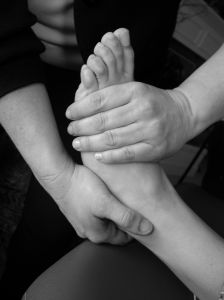Contrary to what we see on a regular basis, congressional representatives are claiming the Social Security Administration (SSA) is “wasting billions” because their administrative law judges (ALJ) rubberstamp applications for approval on a regular basis. Some of these applications, as noted, have already been denied at least two times before being approved by ALJ. It is claimed the reason is because SSA encourages ALJs to hear as many appeals as possible.
Continue reading
Social Security Disability Benefits for Children
When thinking of Social Security disability benefits, many people are only familiar with Social Security Disability Insurance (SSDI) program. This program is administered by the United States Social Security Administration (SSA) and was established to provide benefits to disabled Americans who are unable to work. The program requires a claimant to have worked for a certain number of years prior to applying for benefits. The exact number of years, more specifically calculated as quarterly credits, depends on a claimant’s age at the time of becoming disabled.
Continue reading
A Look at Supplemental Security Income (SSI) Eligibility
Many people are somewhat familiar with Social Security Disability Insurance (SSDI) benefits. While you may not know exactly how the program works, you probably know that if you are disabled and cannot work, you can apply for benefits.
 The SSDI program operates somewhat like a private disability benefits insurance policy. Instead of paying a premium, as you do with private insurance, you pay taxes during the years in which you work. Some of that money goes to fund the SSDI program.
The SSDI program operates somewhat like a private disability benefits insurance policy. Instead of paying a premium, as you do with private insurance, you pay taxes during the years in which you work. Some of that money goes to fund the SSDI program.
In order to qualify for SSDI benefits, you must be disabled, and you must also have worked long enough to have “paid into” the SSDI insurance program, as it is called by the Social Security Administration (SSA). It is not technically measured in years, but rather in quarterly credits earned by the claimant. The actual number of quarterly credits a claimant must have earned will depend on the age of the claimant at time of disability.
Continue reading
How Workers’ Compensation Can Affect Social Security Disability Benefits
When someone is injured on the job, they may be eligible for workers’ compensation benefits. When someone is disabled, but the disability is not the result of a workplace injury or illness, they may be able to apply for Social Security Disability Insurance (SSDI) benefits through a program run by the United States Social Security Admiration (SSA). What happens if a person applied for benefits under both programs?
 According to a recent question and answer feature in Courier Journal, the author discuss the effect workers’ compensation benefits can have on someone who is already receiving SSDI benefits.
According to a recent question and answer feature in Courier Journal, the author discuss the effect workers’ compensation benefits can have on someone who is already receiving SSDI benefits.
As noted in the article, when a person receives Social Security Disability Benefits, they cannot earn more than 80 percent of the wages they were earning before receiving disability. This is basically a provision congress created so a person cannot earn more money from not working than he or she would earn from working.
Continue reading
Ticket to Work Program for Social Security Disability Benefits Recipients
Receiving Social Security Disability Insurance (SSDI) benefits normally means that person will never work again, but what happens if a person wants to return to work in some fashion? One of the biggest impediments to returning to work is a fear that you will lose your current SSDI benefits and your new income from work will not be enough to support you.
 In effort to help those who want to get back into the workforce (and ease the Social Security Disability Insurance budget), the United States Social Security Administration is sponsoring a program known as “Ticket to Work.”
In effort to help those who want to get back into the workforce (and ease the Social Security Disability Insurance budget), the United States Social Security Administration is sponsoring a program known as “Ticket to Work.”
According to a recent news article from Fox, the Ticket to Work program allows a person to be retained in a new occupation, such as data entry, and return to work while still receiving benefits for a 45-month transition period. The hope is you will be able to get back to work, get settled into your new working life, and earn enough to support yourself without SSDI benefits. The fact you could be promoted and are allowed to earn more than 80 percent of your pre-disability income (a limitation placed on all SSDI recipients) may be motivation to get back to work.
Continue reading
Social Security Disability Insurance Benefits and Budgetary Problems
For more than a year, we have heard on the news about how funding is set to run out on Social Security Disability Insurance (SSDI) benefits unless Congress does something fast. According to a recent news article from the Buffalo News, it seems we are still headed down this dangerous path, which may affect millions of disabled Americans.
 It is believed the SSDI fiscal cliff, as it is being called, could cause a 20 percent cut in benefits for millions of people. One representative quoted in the story said he is eager to work with the next Congress to prevent this from happening. As a member of the House Subcommittee on Social Security, he hopes to have such a chance.
It is believed the SSDI fiscal cliff, as it is being called, could cause a 20 percent cut in benefits for millions of people. One representative quoted in the story said he is eager to work with the next Congress to prevent this from happening. As a member of the House Subcommittee on Social Security, he hopes to have such a chance.
Continue reading
Cline v. Colvin: Back Pain and Disability Benefits
Cline v. Colvin, a case from the United States Court of Appeals for the Fifth Circuit, deals with the Supplemental Security Income (SSI) program run by the United States Social Security Administration (SSA). In Cline, claimant applied for SSI benefits in November of 2009 and asserted she was disabled by back pain, scoliosis, sacrolitis, fibromyalgia, and a mitral valve prolapse. Along with her application, claimant submitted detailed medical records dating from April of 2001 to the beginning of 2006 by several medical providers.
 Included in her medical records was a CT Scan showing a small disc protrusion in claimant’s lumber spine but no substantial narrowing of the spinal column. She also had a normal MRI taken in 2005 and another normal MRI in 2006.
Included in her medical records was a CT Scan showing a small disc protrusion in claimant’s lumber spine but no substantial narrowing of the spinal column. She also had a normal MRI taken in 2005 and another normal MRI in 2006.
One of claimant’s doctors treated her for two years starting in 2006. He prescribed medication to manage her pain and muscle spasms. Though he noted no neurological defects, he diagnosed claimant with lower back pain, degenerative spinal arthritis, and muscle spasms.
Continue reading
Copeland v. Colvin: SSDI and SSI Eligibility
Copeland v. Colvin, an appeal from the United States Court of Appeals for the Fifth Circuit, involves claimant who filed an application for Social Security Disability Insurance (SSDI) and Supplemental Security Income (SSI) benefits in November of 2009. Claimant asserted her disability was based upon knee trouble, heart disease, back problems, and a shoulder injury that all began in October 2009.
 The United States Social Security Administration (SSA) denied claimant’s application, and, eventually, a hearing was held before an Administrative Law Judge (ALJ). At the hearing, claimant testified, along with a Vocational Expert (VE), who is an “expert” hired by SSA to determine if claimant is able to perform any type of work locally or even nationally.
The United States Social Security Administration (SSA) denied claimant’s application, and, eventually, a hearing was held before an Administrative Law Judge (ALJ). At the hearing, claimant testified, along with a Vocational Expert (VE), who is an “expert” hired by SSA to determine if claimant is able to perform any type of work locally or even nationally.
Continue reading
Herrmann v. Colvin: SSI Benefits Eligibility
Applying for disability benefits is a complicated process that often seems like it is stacked against claimants who know little about how the system works. It is for that reason that one of the best things claimants can do is to consult with a disability benefits attorney as early in the process as possible.
Herrmann v. Colvin, a case from United States Court of Appeals for the Seventh Circuit, involved claimant who was denied Supplemental Security Income (SSI) benefits for her medical conditions prior to reaching the age of 55 but was determined to be disabled upon turning 55. This resulted in a partial payment of disability benefits. Claimant appealed this partial denial of her application for benefits.
Continue reading
 Massachusetts Social Security Disability Lawyers Blog
Massachusetts Social Security Disability Lawyers Blog



